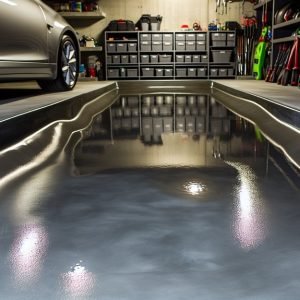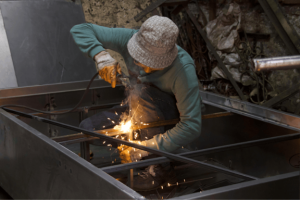Last Updated on October 30, 2025 by teamobn
Renovation, repair, and painting (RRP) activities often disturb surfaces coated in lead-based paint, especially in homes, child care facilities, and schools built before 1978.
Exposure to lead dust and chips poses serious health risks, particularly to young children and pregnant women. That’s why federal law requires contractors to be certified under the Environmental Protection Agency (EPA) Renovation, Repair, and Painting Rule, and in many cases, obtain state-specific RRP certification.
If you’re a contractor, painter, or renovator, understanding how to obtain both EPA and state certification quickly isn’t just smart business—it’s legally essential. This article will guide you through the process with clarity and speed in mind.
What Is the EPA RRP Rule and Who Needs Certification?
The EPA RRP Rule mandates that firms working on pre-1978 buildings must be certified and use lead-safe practices during renovation. Anyone involved in painting, repairing, remodeling, or disturbing lead-painted surfaces larger than six square feet inside or twenty square feet outside must be trained and certified. This rule applies to general contractors, painters, electricians, plumbers, and even landlords if they perform the work themselves.
Even if you don’t currently work on older properties, having the certification can broaden your scope and allow you to accept more lucrative contracts. Being certified signals professionalism, compliance, and safety awareness, giving your business a competitive edge.
Why States Have Separate RRP Programs
While the EPA sets national guidelines, individual states can administer lead-based paint programs. States like Massachusetts, Rhode Island, North Carolina, and others operate their own state-authorized RRP programs, which means contractors must apply through that state rather than the EPA.
It’s critical to check whether your state follows the federal program or has a state-specific system. Operating without the proper federal or state certification can result in steep fines and damage your business’s reputation.
In some states, state-level certification takes precedence, and firms must comply with those additional or modified requirements.
How to Get Certified with the EPA
To become certified under the EPA’s RRP Rule, firms and individuals must follow a two-part process: firm certification and renovator training. First, apply online through the EPA website to get your company certified. This process usually takes 5 to 10 business days once the application and $300 fee are submitted.
Then, at least one person from the firm must attend an EPA-accredited Lead Renovator Training Course. This 8-hour, hands-on course includes instruction in lead-safe work practices and proper cleanup techniques. Once the course is completed, you receive a certificate valid for five years, and your name is added to a national database of certified renovators.
Finding and Registering for a Lead Renovator Training Course
Speed is key if you want to get certified fast. Look for EPA-accredited trainers who offer frequent classes either in-person or virtually. Many training providers offer one-day certification programs to get you trained and certified in hours.
Courses are typically available through construction associations, community colleges, environmental safety firms, or directly via the trainer’s website.
Choose a course that offers your certificate immediately upon completion, so there’s no delay in starting work legally. Some providers even offer expedited shipping of your certificate or a printable temporary certificate.
State-Specific Certification Processes
In states with their own RRP programs, certification requirements can vary significantly. For example, Massachusetts requires the company and individual renovators to be licensed through the Department of Labor Standards (DLS), while Oregon mandates unique training providers. The process usually involves submitting an application, paying a fee, and completing a state-approved training course.
Often, the timeline can be shortened by choosing a state-preferred provider who offers online applications and digital certificates. Be sure to verify all requirements directly with your state’s lead program website to avoid redundant training or disqualification due to using the wrong form.
Maintaining and Renewing Your Certification
EPA certifications are valid for five years, while state certifications can vary between three to five years. To keep your certification active, you must complete a refresher course before it expires. For the EPA, if you take a refresher course with hands-on training, your renewed certification remains valid for another five years.
If the hands-on portion is skipped, you may only get three years. Keeping track of your expiration date is critical. If your certification lapses, you must take the initial 8-hour course again. Many renovators set calendar reminders or register for automated renewal notices from their training provider to avoid this issue.
Benefits of Being Certified—Beyond Compliance
While staying compliant with federal and state law is the primary reason to get RRP certified, there are also clear business advantages. Certified contractors are often more trusted by clients, especially homeowners concerned about their families’ health.
Additionally, certification opens the door to more job opportunities with government agencies, property managers, and insurance repair networks that require it. Some states and cities offer preferred contractor listings for certified firms, boosting your local SEO and giving your brand more visibility. For many small businesses, certification becomes a legal necessity and a marketing advantage.
Penalties for Non-Compliance
Failing to follow the RRP Rule comes with serious consequences. The EPA can fine uncertified firms up to $47,000 per violation daily. That could mean hundreds of thousands of dollars in fines for a single project where lead safety rules were ignored.
Many contractors mistakenly believe that small jobs or maintenance tasks don’t qualify, but any disturbance of lead paint beyond the square footage threshold requires certification. State agencies can also impose penalties, including business license suspensions, stop work orders, and public enforcement actions.
In some cases, you may even be liable for health damages caused to tenants or occupants due to negligence.
How to Get Certified Fast
If you’re on a tight schedule, speed up the certification process by choosing a training provider with same-day certificates and electronic application tools. Gather all your business documents in advance, including your EIN, proof of business registration, and payment method.
If you’re applying through a state program, confirm their average processing times—some offer expedited approvals for a fee. If you have multiple employees, consider hosting a private on-site training that allows your entire team to get certified at once.
Some providers can complete the course in one afternoon and issue your certificates digitally within 24 hours.
Wrapping it up…
Obtaining your EPA and state RRP Lead Paint Certification is crucial for any contractor working on older buildings. It protects your clients, keeps your business legally compliant, and opens doors to new projects and partnerships.
The process doesn’t have to be slow or complicated—when you know the requirements and work with the right training provider, certification can be completed efficiently and affordably. Whether you’re an independent renovator or managing a larger team, taking this step shows your commitment to safety and professionalism. Today is the best day to get started on your certification






